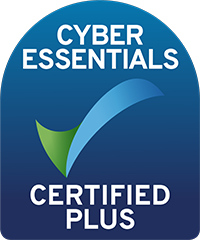Salary or bonus?
Newsletter issue - November 2019.
As 31 December approaches, many companies will be getting ready to tie up tax matters for their financial year-end and giving consideration to salaries, bonuses and dividends.
Given current tax rates, paying a dividend rather than a salary will often be a more cost-effective way of withdrawing profits from a company. However, if the company is loss-making and has no retained profits, it will not be possible to declare a dividend, and an alternative will need to be considered. This often involves an increased salary or a one-off bonus payment.
From a tax perspective, the position will be the same whether a salary or bonus is paid. Both types of payment attract income tax at the recipient's relevant rate of tax (20%, 40% or 45% as appropriate). However, from a National Insurance Contributions (NICs) perspective, the position, and any potential cost savings, will depend on whether or not the payment is made to a director.
Directors have an annual earnings period for NIC purposes. Broadly, this means that NICs payable will be the same regardless of whether the payment is made in regular instalments or as a single lump sum bonus. In addition, since there is no upper limit of employer (secondary) NICs, the company's position will be the same regardless of whether the payment is made by way of a salary or a bonus.
Where a bonus or salary payment is to be made to another family member who is not a director, the earnings period rules mean that it may be possible to save employees' NICs by paying a one-off bonus rather than a regular salary.
Example
Jack is the sole director of a company and an equal 50% shareholder with his wife Jill.
In 2019/20 they each receive a salary of £720 per month.
In the year to 31 March 2020, after paying out the salaries, the company has a retained profit of £24,000, which will be shared equally between the two shareholders.
They want to know whether it will be cost-effective to extract the profits as an additional salary - each receiving an additional £1,000 per month for the next twelve months - or as a one-off bonus payment with each receiving £12,000.
The income tax position will be the same regardless of which method is used.
As Jack is a director, his NIC position will be the same regardless of which route is taken as he has an annual earnings period for NIC purposes.
However, as Jill is not a director, the normal earnings period for NIC in a month will be the interval at which her existing salary is paid. Assuming NIC rates and thresholds remain the same in 2020/21, if Jill receives an additional salary of £1,000 a month, she will pay Class 1 NIC of £120 (£1,000 x 12%) a month on that additional salary. Her annual NIC bill on the additional salary of £12,000 will be £1,440. If she receives a lump sum bonus of £12,000 in one month (in addition to her normal monthly salary of £720), she will pay NIC on the bonus of £585 ((£3,450 x 12%) + (£8,550 x 2%)).
Paying a bonus instead of a salary reduces Jill's NIC bill by £855.
Whilst this example highlights that it possible to arrange matters and potentially obtain tax and/or NIC savings, such savings should never be the only consideration in determining company profit extraction strategy.
Charities & Not For Profit
We have been providing charity clients with high quality, specialist advice and service for many years, and our charity clients range from small village halls to large national organisations...

Farming Industry
The largest industry sector that we deal with is farming, as you would expect in a rural practice. This means that we have developed considerable expertise in this field...

 Cookies are small text files that are stored on your computer when you visit a website. They are mainly used as a way of improving the website functionalities or to provide more advanced statistical data.
Cookies are small text files that are stored on your computer when you visit a website. They are mainly used as a way of improving the website functionalities or to provide more advanced statistical data.












